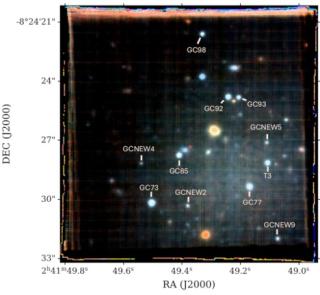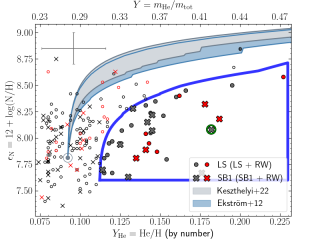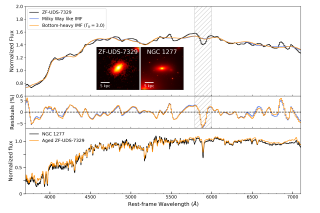Delta Scuti (δ Sct) stars are opacity-driven pulsators with masses of 1.5-2.5M⊙, their pulsations resulting from the varying ionization of helium. In less massive stars such as the Sun, convection transports mass and energy through the outer 30 per cent of the star and excites a rich spectrum of resonant acoustic modes. Based on the solar example, withno firm theoretical basis, models predict that the convective envelope in δ Sct stars extends only about 1 per cent of the radius, but with sufficient energy to excite solar-like oscillations. This was not observed before the Kepler mission, so the presence of a convective envelope in the models has been questioned. Here we report the detection of solar-like oscillations in the δ Sct star HD 187547, implying that surface convection operates efficiently in stars about twice as massive as the Sun, as the ad hoc models predicted.
Advertised on
It may interest you
-
 O ne of the key challenges in astronomy is to measure accurate distances to celestial objects. Knowing distances is crucial since it allows us to measure physical properties such as size, mass and luminosity. Since we can’t go out and use a tape-measure, a range of different approaches have been developed. Many of these approaches rely on using “standard candles”. Standard candles are objects (for example stars or supernovae) for which we know their intrinsic ”true” brightness. Once we know this, then their observed brightness compared to their intrinsic brightness gives us a distance to theAdvertised on
O ne of the key challenges in astronomy is to measure accurate distances to celestial objects. Knowing distances is crucial since it allows us to measure physical properties such as size, mass and luminosity. Since we can’t go out and use a tape-measure, a range of different approaches have been developed. Many of these approaches rely on using “standard candles”. Standard candles are objects (for example stars or supernovae) for which we know their intrinsic ”true” brightness. Once we know this, then their observed brightness compared to their intrinsic brightness gives us a distance to theAdvertised on -
 There is increasing evidence that single-star evolutionary models are unable to reproduce all of the observational properties of massive stars. Binary interaction has emerged as a key factor in the evolution of a significant fraction of massive stars. In this study, we investigate the helium (Y(He)) and nitrogen surface abundances in a comprehensive sample of 180 Galactic O-type stars with projected rotational velocities of ≤150 km/s. We found a subsample (~20% of the total, and ~80% of the stars with Y(He) ≥ 0.12) with a Y(He) and nitrogen abundance combined pattern that is unexplainable byAdvertised on
There is increasing evidence that single-star evolutionary models are unable to reproduce all of the observational properties of massive stars. Binary interaction has emerged as a key factor in the evolution of a significant fraction of massive stars. In this study, we investigate the helium (Y(He)) and nitrogen surface abundances in a comprehensive sample of 180 Galactic O-type stars with projected rotational velocities of ≤150 km/s. We found a subsample (~20% of the total, and ~80% of the stars with Y(He) ≥ 0.12) with a Y(He) and nitrogen abundance combined pattern that is unexplainable byAdvertised on -
 Observations made with the James Webb Space Telescope (JWST) have revealed a larger-than-expected number of massive galaxies when the Universe was still young. The focus of this study is precisely one of these galaxies, ZF-UDS-7329. It is a very compact object, and its spectrum suggests that it formed at a very early stage, when the Universe was around 2 billion years old. According to theoretical predictions, these objects first formed a generation of stars at the center of their dark matter halos and subsequently grew by merging with other halos. However, due to the random nature of theseAdvertised on
Observations made with the James Webb Space Telescope (JWST) have revealed a larger-than-expected number of massive galaxies when the Universe was still young. The focus of this study is precisely one of these galaxies, ZF-UDS-7329. It is a very compact object, and its spectrum suggests that it formed at a very early stage, when the Universe was around 2 billion years old. According to theoretical predictions, these objects first formed a generation of stars at the center of their dark matter halos and subsequently grew by merging with other halos. However, due to the random nature of theseAdvertised on
